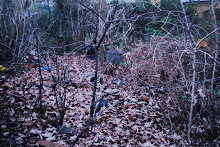show at the design museum London

Leading the forefront of contemporary fashion design, the twice named 'British Designer of the Year,' Hussein Chalayan, is renowned for his innovative use of materials, meticulous pattern cutting and progressive attitudes to new technology.
This exhibition is the first comprehensive presentation of Hussein Chalayan’s work in the UK. Spanning fifteen years of experimental projects, the exhibition explores Hussein Chalayan's creative approach, his inspirations and the many themes which influence his work such as cultural identity, displacement and migration.
Exhibits include ‘Afterwords’ which explores the notion of ‘wearable, portable architecture’ in which furniture literally transforms itself into garments; ‘Airborne’ - bringing the latest LED technology to fashion design with a spectacular dress consisting of Swarovski crystals and over 15,000 flickering LED lights; ‘Before Minus Now’ a dress made of materials used in aircraft construction which changes shape by remote control and ‘Readings’ a dress comprising of over 200 moving lasers presenting an extraordinary spectacle of light.
http://www.designmuseum.org/exhibitions/2009/hussein-chalayan
I had heard a little about Chalayan before, most have come across the infamous table that transforms into a skirt. However there is much more to this extraordinary inventive designer. His approach is very creative and influences to his work are varied and include genetics, technological progress, displacement and cultural identity. It seems he uses fashion as a way to get across varied concepts and He regularly extents his ideas into museums exhibitions and art installations. While also creating beautiful and wearable clothes that give us a vision of the future. Defiantly one of the best shows I have seen this year.
Here are a few of his works I found partially interesting:
BEFORE MINUS NOW (spring /summer 2000)
These tactile sculptured dresses look like they have been carved into the way you would think of sculpting wood or stone. I later found out these dresses were part of a collection exploring the relationship between mankind, technology and natural forces. These items were inspired by the way it which mountains are formed after centuries of tectonic movement and erosion of the earth. Chalayan started with a shapeless bale of tulle that was curved and cut into gradually to space it into a regular dress shape.

AFTERWORDS (Autumn/Winter 2000)
This collection includes the renowned ‘table skirt’ and is inspired by the plight of refugees from Cyprus, Chalayan homeland, during the ethnic cleansing prior to 1974. The collection explores how people react when they go through the horror of having to leave home suddenly, they want to hide their possessions or the carry them with them as they leave.
The show starts and it’s more of a stage setting than a conventional catwalk, with a modernist style sitting room off to the right of the large white stage.
In a way Chalayans shows are very much a performance, each item part of a narrative that is built up throughout the event. The audience feel something amazing is going to happen and it does!
Within the room the clothes are disguised as chair covers, each one different from the next, as the models pin and space them around their bodies. Chairs become suitcases; folding down in to neat rectangles they become the perfect accessory.
And then the final performance: A single model sashays out onto the stage; she carefully pulls the central part of the table out. Stepping in too the middle she lifts the innermost piece revealing beautiful shaped wood that cascaded perfectly around her.
After the models have clothes themselves and left , the room becomes empty and lifeless once more.
ONE HUNDRED AND ELEVEN (spring/summer 2007)
This was the most groundbreaking and inspiring collection out of all Chalayans work. The focus of this clothing collection was how much fashion has been influenced and shaped by the last one hundred and eleven years. Including wars, revolutions, and political and social changes.
The final dresses were mechanical (some videos below), so once on the catwalk the dress would start to morph from one era’s style to another. The way the fabric seemed to suddenly pull at different parts of the body and other details would appear was breathtaking. Each dress more carefully crafted than then next, a stunning mix of technology, history and fashion .






.jpg)


